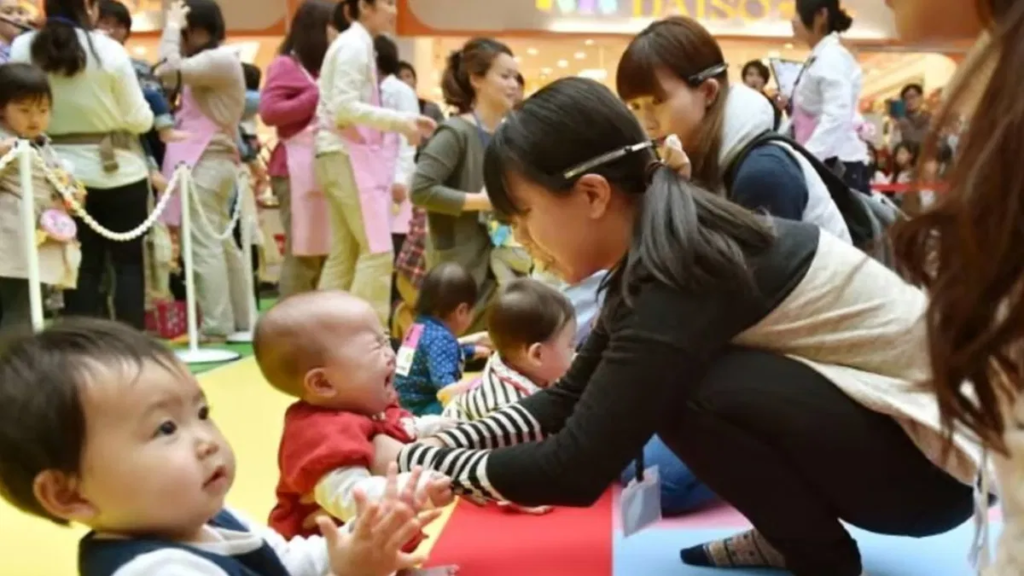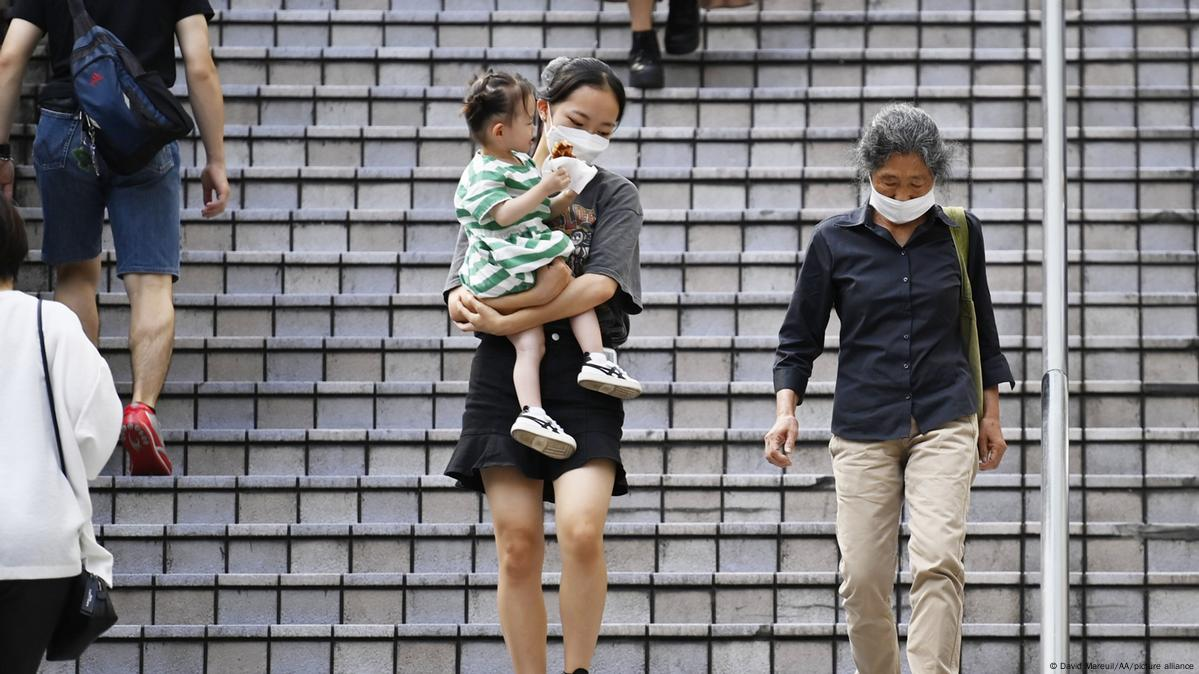Japan, a nation often celebrated for its advancements in technology and rich cultural heritage, is facing a demographic challenge of unprecedented proportions.
Experts warn that the country’s declining birthrate could lead to extinction within a few centuries if urgent measures are not implemented. Professor Hiroshi Yoshida from Tohoku University has highlighted this crisis with a “ticking clock,” a conceptual tool that projects the alarming consequences of the current population trends.
The Ticking Clock: A Stark Warning
Professor Yoshida’s “ticking clock” serves as a sobering visual representation of Japan’s population crisis. Since 2012, the clock has tracked real-time data on the country’s declining child population and projects the year when Japan may be left with just one child under the age of 14. According to the latest calculations, this could happen by the year 2720, roughly 695 years from now.
The clock underscores an annual decrease of 2.3% in the child population, reflecting a troubling trend that has persisted for decades. As of 2023, Japan’s fertility rate has dropped to an alarming 1.20, far below the replacement level of 2.1.
This stark decline has been linked to several societal factors, including reduced interest in marriage, an increasing number of individuals choosing to remain single, and economic challenges that deter families from having children.
Read : What is Xenophobia and How It’s Stalling the Economy of India, China, and Japan
The situation is further compounded by a report from Japan’s health ministry, which revealed that in the first half of 2024, the country recorded only 350,074 births—a 5.7% decline compared to the same period in 2023. This marks the lowest birthrate since record-keeping began in 1969, emphasizing the severity of the crisis.
The Societal Impact of a Shrinking Population
The implications of Japan’s declining birthrate extend far beyond numbers on a clock. A shrinking population poses significant challenges to the nation’s economic stability, social structure, and cultural identity.
Economically, fewer births mean a declining workforce, which could hinder productivity and innovation. An aging population with fewer young people to support it places immense strain on social security systems, healthcare infrastructure, and pension funds.
As Japan’s elderly population continues to grow, the ratio of workers to retirees is becoming increasingly imbalanced, threatening the nation’s ability to sustain its economic prosperity.

Socially, the decline in births reflects broader shifts in societal norms and priorities. Changing attitudes toward marriage and family life, coupled with the rising cost of living and limited childcare support, have discouraged many young couples from starting families.
Additionally, the increasing prevalence of single-person households highlights a cultural trend toward individualism, which further exacerbates the population decline.
The cultural ramifications are equally concerning. Country’s rich traditions and heritage are deeply tied to its people, and a dwindling population threatens the preservation of these customs.
Rural areas, in particular, are experiencing rapid depopulation, leading to the abandonment of historic towns and villages. The loss of younger generations to urban migration or declining birthrates could erode the vibrant cultural tapestry that defines Japan.
Government Initiatives and the Path Forward
Recognizing the gravity of the situation, Japanese policymakers are striving to address the population crisis through a range of initiatives aimed at boosting the birthrate. However, these measures have so far yielded limited success, underscoring the complexity of the challenge.
The Japanese government has introduced financial incentives for families, including subsidies for childbirth and childcare, tax benefits, and housing support. In addition, efforts have been made to improve work-life balance, with policies aimed at reducing long working hours and promoting parental leave for both mothers and fathers.
Despite these initiatives, cultural and economic barriers persist. The high cost of raising children, coupled with limited availability of affordable childcare, continues to deter many families from having more children. Additionally, deeply ingrained societal norms around gender roles and the expectation of women to prioritize family over career remain significant obstacles.

Experts emphasize the need for a multifaceted approach that addresses not only financial and logistical barriers but also cultural and societal attitudes. Promoting gender equality, fostering inclusive work environments, and normalizing shared parenting responsibilities are critical steps toward reversing the declining birthrate.
Moreover, encouraging immigration and integrating foreign workers into the workforce could provide a short-term solution to Japan’s labor shortage while also diversifying the population. However, this approach requires careful consideration of social integration and cultural acceptance.
Population crisis is a complex and deeply rooted issue that requires bold and innovative solutions. As Professor Yoshida’s “ticking clock” continues to count down, it serves as a stark reminder of the urgency of addressing this challenge. Without decisive action, the nation risks losing not only its population but also its unique cultural identity and global influence.
Let Japan’s struggle serve as a wake-up call to other nations facing similar demographic challenges. The time to act is now, before the clock runs out.

